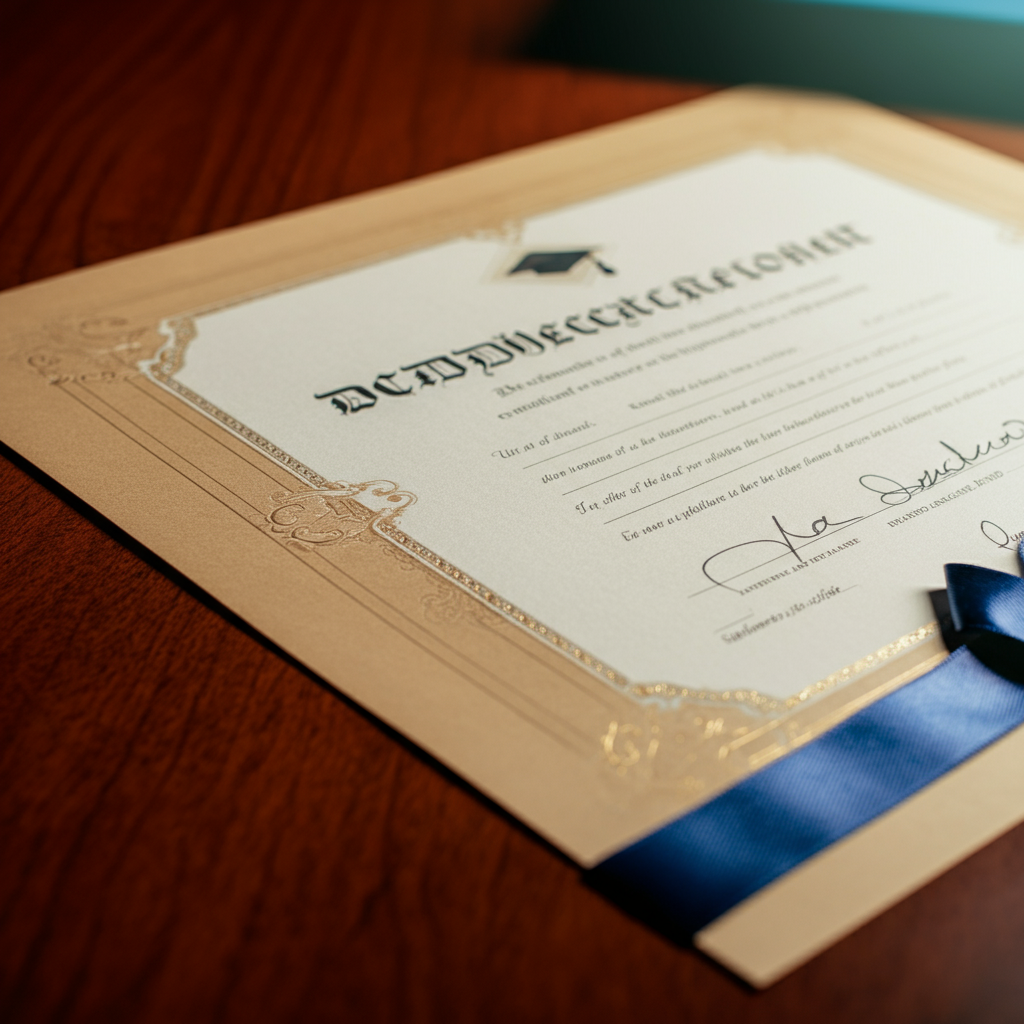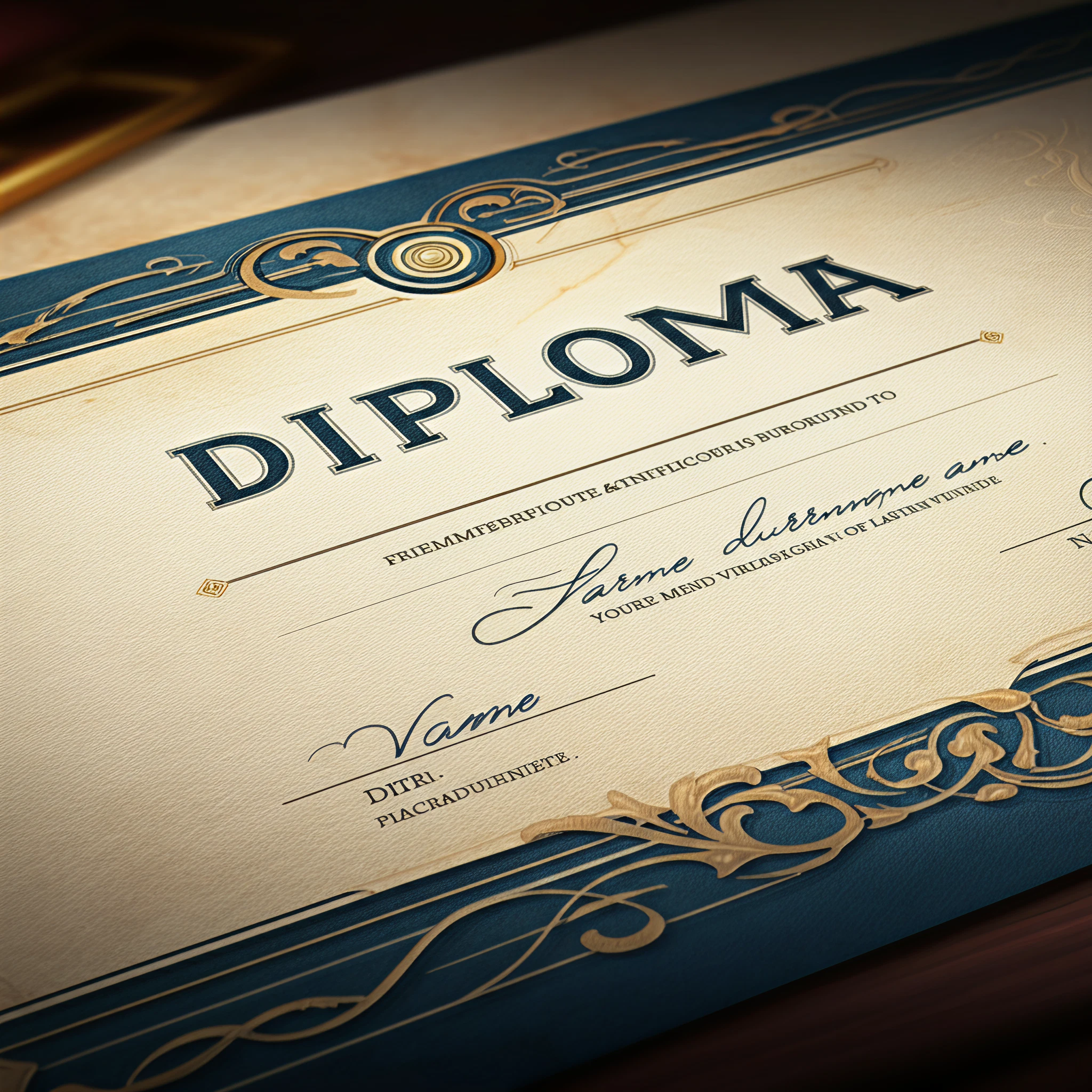Các fake diploma industry is booming—and that’s a problem for everyone. From HR managers hiring new employees to academic institutions verifying transfer credits, the ability to identify fraudulent credentials has become a critical skill in our credential-driven society.
Fake diplomas aren’t just pieces of paper anymore. They’re sophisticated forgeries that can fool even experienced professionals. The consequences of missing these red flags can be severe: hiring unqualified candidates, legal liability, and damaged institutional reputation.
This guide will teach you exactly how to spot a fake diploma using proven verification methods. You’ll learn the telltale signs that separate authentic credentials from clever counterfeits, plus the legal implications you need to know about.
Why Bằng cấp giả Are More Common Than You Think
The market for fraudulent academic credentials has exploded over the past decade. Online diploma mills operate openly, advertising “authentic-looking” degrees that can fool casual inspection. These operations have become increasingly sophisticated, using high-quality printing techniques and official-looking seals.
The problem extends beyond obvious scams. Some fake diploma creators specifically target employers and academic institutions, knowing that many verification processes rely on visual inspection alone. The result? Unqualified individuals landing jobs and academic positions they haven’t earned.
Physical Red Flags: What to Look for First
Paper Quality Tells the Story
Authentic diplomas use specific paper types that are difficult to replicate perfectly. Here’s what to examine:
Paper Weight and Texture: Real diplomas typically use heavyweight paper with a distinctive texture. Fake diplomas often feel flimsy or use standard printer paper with a glossy finish that screams “homemade.”
Watermarks: Many legitimate institutions embed watermarks in their diploma paper. Hold the document up to light—authentic watermarks appear as subtle patterns or institutional logos. Fake diplomas either lack watermarks entirely or feature obvious, poorly executed attempts.
Aging and Wear: Consider the diploma’s age versus its condition. A 20-year-old diploma that looks pristine might be suspicious, while appropriate aging and wear patterns suggest authenticity.

Typography and Font Inconsistencies
Professional institutions maintain strict standards for their diploma formatting. Look for these warning signs:
Font Mixing: Authentic diplomas use consistent fonts throughout. Fake diplomas often mix multiple fonts or use fonts that don’t match the institution’s official style guide.
Spacing Issues: Uneven spacing between letters, words, or lines indicates amateur production. Professional diplomas maintain precise formatting standards.
Spelling and Grammar: This might seem obvious, but fake diplomas frequently contain spelling errors, grammatical mistakes, or awkward phrasing that would never appear on legitimate credentials.
Seals and Signatures: The Authentication Challenge
Official Seals: Authentic institutional seals have specific design elements, colors, and placement. Research the institution’s official seal design and compare it carefully. Fake diplomas often use generic seals or modify existing designs poorly.
Signature Quality: Real diplomas feature original signatures or high-quality reproductions. Fake diplomas might show pixelated signature images, inconsistent ink colors, or signatures that don’t match known samples from institutional officials.
Embossing and Raised Elements: Many legitimate diplomas include embossed seals or raised lettering that’s difficult to replicate. Run your fingers over these elements—they should feel distinctly raised from the paper surface.
Institutional Verification: The Most Reliable Method
Accreditation Status Research
Before accepting any diploma, verify the issuing institution’s accreditation status:
Accreditation Databases: Use official databases like the Database of Accredited Postsecondary Institutions and Programs (DAPIP) to confirm the school’s legitimacy and accreditation status.
Accreditation Timeline: Check when the institution received accreditation versus when the diploma was supposedly issued. A diploma dated before the school’s accreditation period is automatically suspect.
Degree Program Verification: Confirm that the institution actually offers the degree program listed on the diploma. Many fake diplomas claim degrees from programs that don’t exist at legitimate schools.
Direct Institution Contact
The most reliable verification method is contacting the institution directly:
Registrar’s Office: Most schools have established procedures for verifying graduates. Contact the registrar’s office with the graduate’s name, degree, and graduation date.
Verification Services: Many institutions use third-party verification services like the National Student Clearinghouse. These services can quickly confirm or deny graduation claims.
Alumni Records: Some schools maintain searchable alumni databases that can help verify graduation claims.
Online Verification Tools and Resources
Digital Verification Platforms
Modern technology offers several verification options:
Blockchain Credentials: Some institutions now issue blockchain-verified diplomas that are nearly impossible to forge. These digital credentials include unique verification codes.
QR Code Verification: Many newer diplomas include QR codes that link to official verification pages. Scan these codes to confirm authenticity instantly.
Digital Badges: Professional certifications and some academic credentials now use digital badges with built-in verification features.
Warning Signs in Online Research
Diploma Mill Indicators: Research the institution online. Warning signs include no physical address, aggressive marketing, very low admission standards, and accreditation from unrecognized agencies.
Social Media Presence: Legitimate institutions have established social media presence and alumni networks. Fake schools often lack these authentic community connections.
Advanced Verification Techniques
Professional Verification Services
Consider using professional services for high-stakes verification:
Background Check Companies: Professional background check services have advanced tools and databases for credential verification.
Forensic Document Analysis: For suspected forgeries, forensic document analysts can examine paper, ink, and printing techniques to determine authenticity.
International Verification: For foreign diplomas, specialized services can verify credentials across different educational systems and languages.
Technology-Assisted Verification
Digital Forensics: Advanced image analysis can detect digital manipulation in scanned diploma images.
Database Cross-Referencing: Professional services can cross-reference multiple databases to confirm graduation claims.
Pattern Recognition: Machine learning tools can identify common patterns in fake diplomas that human reviewers might miss.
Protecting Yourself and Your Organization
Develop Verification Protocols
Create systematic approaches to credential verification:
Standard Procedures: Establish clear protocols for verifying all academic credentials, regardless of source.
Documentation Requirements: Require original documents plus verification through official channels.
Regular Updates: Keep verification procedures current with evolving fraud techniques.
Training and Awareness
Staff Education: Train HR personnel and academic staff to recognize fake diploma warning signs.
Verification Tools: Provide staff with access to proper verification resources and databases.
Update Procedures: Regularly update verification procedures to address new fraud techniques.
Your Next Steps for Foolproof Verification
Spotting fake diplomas requires systematic attention to detail and proper verification procedures. The visual inspection techniques covered here provide your first line of defense, but direct institutional verification remains the gold standard for confirming authentic credentials.
Don’t rely on appearance alone. The most sophisticated fake diplomas can fool visual inspection, but they can’t fool proper verification procedures. Always contact the issuing institution directly and use multiple verification methods when credentials are critical to your decision-making process.
Remember: the cost of proper verification is always less than the cost of accepting fraudulent credentials. Implement these verification techniques consistently, and you’ll protect yourself and your organization from the growing threat of fake diplomas.
Start by reviewing your current verification procedures and identifying gaps. Then implement the systematic approach outlined here to ensure every credential you accept is legitimate and earned.
Buydiploma offers to mua bằng giả:



